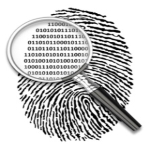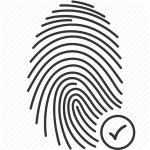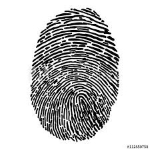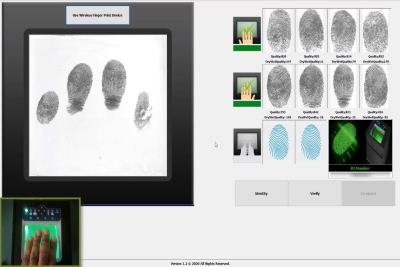Finger Recognition System
It's a fingerprint identification technology designed for biometric systems. The technology assures system performance with fast, reliable fingerprint matching in 1-to-1 and 1-to-many modes.
a software development of stand-alone and Web-based solutions on Microsoft Windows, Linux, macOS, iOS and Android platforms.
* Rolled and flat fingerprints matching.
* Tolerance to fingerprint translation, rotation and deformation.
* Identification capability.
* Image quality determination.
* Adaptive image filtration.
* Features generalization mode.
* Compact fingerprint template.
* Scanner-specific algorithm optimizations.

The algorithm matches flat-to-rolled, flat-to-flat or rolled-to-rolled fingerprints with a high degree of reliability and accuracy, as it is tolerant to fingerprint deformations. Rolled fingerprints have much bigger deformation due to the specific scanning technique (rolling from nail to nail) than those scanned using the "flat" technique.

The algorithm is able to identify fingerprints even if they are rotated, translated, deformed and have only 5 - 7 similar minutiae (usually fingerprints of the same finger have 20 - 40 similar minutiae) and matches up to 40,000 flat fingerprints per second.

The functions can be used in 1-to-1 matching (verification), as well as 1-to-many mode (identification).

It's able to ensure that only the best quality fingerprint template will be stored into database by using fingerprint image quality determination during enrollment..
FEATURES AND CAPABILITIES
Rolled and flat fingerprints matching:
The algorithm matches flat-to-rolled, flat-to-flat or rolled-to-rolled fingerprints with a high degree of reliability and accuracy, as it is tolerant to fingerprint deformations. Rolled fingerprints have much bigger deformation due to the specific scanning technique (rolling from nail to nail) than those scanned using the "flat" technique. Conventional "flat" fingerprint identification algorithms usually perform matching between flat and rolled fingerprints less reliably due to the mentioned deformations of rolled fingerprints.
Tolerance to fingerprint translation, rotation and deformation:
it's proprietary fingerprint template matching algorithm is able to identify fingerprints even if they are rotated, translated, deformed and have only 5 - 7 similar minutiae (usually fingerprints of the same finger have 20 - 40 similar minutiae) and matches up to 40,000 flat fingerprints per second.
Identification capability:
The functions can be used in 1-to-1 matching (verification), as well as 1-to-many mode (identification).
Image quality determination:
It's able to ensure that only the best quality fingerprint template will be stored into database by using fingerprint image quality determination during enrollment.
Adaptive image filtration:
The algorithm eliminates noises, ridge ruptures and stuck ridges for reliable minutiae extraction – even from poor quality fingerprints – with a processing time of 0.6 seconds.
Features generalization mode:
The fingerprint enrollment mode generates the collection of generalized fingerprint features from a set of fingerprints of the same finger. Each fingerprint image is processed and features are extracted. Then the features collection set is analyzed and combined into a single generalized features collection, which is written to the database. This way, the enrolled features are more reliable and the fingerprint recognition quality considerably increases.
Compact fingerprint template:
It's allows to configure the number and size of fingerprint features in a fingerprint template. Combined with unlimited database size, this capability allows to optimize target system size and performance.
Compact fingerprint template:
It's allows to configure the number and size of fingerprint features in a fingerprint template. Combined with unlimited database size, this capability allows to optimize target system size and performance.
